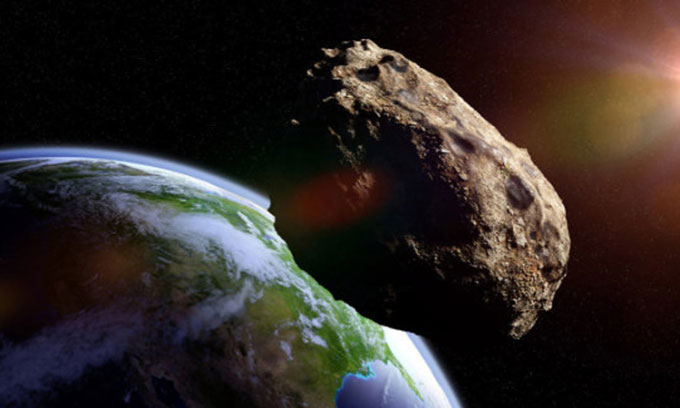A 330 – 750 m diameter asteroid is expected to approach on January 7, at a distance only one-third that between Earth and Venus.
The asteroid 496860 (1999 XL136) will pass by Earth at a distance of 13.4 million kilometers on January 7, 2022, according to the Center for Near-Earth Object Studies (CNEOS) at NASA. The nearest planet to Earth, Venus, is three times farther away than this distance. Meanwhile, Mars is 17 times farther, averaging about 225 million kilometers away.

Simulation of an asteroid approaching Earth. (Photo: Dottedhippo).
The asteroid 496860 (1999 XL136) is estimated to be moving at a speed of 60,350 km/h, which is about 30 times faster than a jet fighter and 18 times faster than a bullet fired from a rifle. The last time this asteroid came close to Earth was in April 2017, and the next approach is expected in July 2034.
The diameter of 496860 (1999 XL136) is estimated to be between 330 – 750 m, meaning it could be as small as the Eiffel Tower (France) or twice the length of the Empire State Building (USA). The large discrepancy in the estimated diameter is due to the methods used to calculate the size of the asteroid. Astronomers use albedo—the measure of visible light from the Sun reflected off the asteroid’s surface—to determine the diameter.
This method can lead to significant discrepancies because size is not the only factor that determines the amount of light reflected from the asteroid, and albedo also heavily depends on the reflectivity of the surface. Other factors affecting reflectivity include the material composition, how that material is distributed on the surface, and its density.
Reflectivity also depends on the color of the asteroid. For example, a light-colored “chalky” asteroid with loose or porous material on its surface may appear very large to astronomers. In contrast, an asteroid with a surface resembling coal reflects less light, making it appear smaller than it actually is. Thus, from millions of kilometers away, a large dark asteroid can look as big as a small bright-colored asteroid.
Scientists also have another method for determining asteroid size with much smaller margins of error. This involves measuring the amount of heat emitted by the asteroid as it moves through space. This can be done by observing the object in infrared light. This method may provide a better size indication than visible light since a larger object will appear brighter in infrared light, and this is not affected by the amount of visible light it reflects.
According to NASA’s Jet Propulsion Laboratory at the California Institute of Technology, the unit operating CNEOS, the best way to determine an asteroid’s size is to combine both reflected visible light and infrared signals.
















































